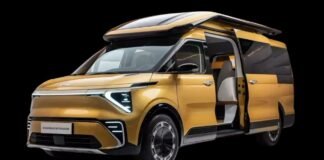Guys, when I saw this news, I almost completely lost it—Mazda is canceling four models in 2025! Please don’t let it be the Miata.
Mazda 2: The End of a Tiny Subcompact

The first model getting discontinued is one that we actually used to get in the United States—the Mazda 2. I believe they brought it up from Mexico. This tiny subcompact is the kind of car you might see in the Caribbean. I doubt Puerto Rico gets the Mazda 2, but I bet some of these markets in the region do.
Speaking of Puerto Rico, that’s where I am right now—to drive the new Honda Passport! I’m excited to test it in some cool, jungly off-road places. But back to the Mazda 2—it’s getting the axe, and honestly, I won’t shed a tear for it.
CX-3: A Spicy Discontinuation

Next up is the CX-3, and this one’s a bit spicy. We used to get the CX-3, but Mazda replaced it with the CX-30. The company seems to be shifting its crossover naming strategy, with most models now having a zero at the end. Similarly, CX-5 is going to be replaced with CX-40.
Mazda Thailand is producing lots of hybrid vehicles. it suggest that mazda is going to make lots of CX-3 there but due to new tarriffs it is hard to believe that mazda has any plans on bringing this vehicle to U.S.
Instead, Mazda will probably manufacture the new CX-30 in Japan or Mexico and export it from there. Toyota did something similar with the Corolla Cross, debuting it in Southeast Asia before bringing it stateside.
Mazda 6: A Gradual Goodbye

Mazda 6 which was discontinued in U.S back in 2021, But this was seen in markets like Britain and Australia until recently. And now European markets going to get Mazda 6E or EZ6 manufactured by Changan Mazda in China. Unfortunately, it won’t be coming to the U.S.
MX-30: The Short-Lived EV
The final model on the chopping block is the MX-30. I actually spotted one recently in Naples, Florida, and was surprised. Seeing a second-generation RAV4 EV in the same area once a month also makes me wonder—some people just love their 100-mile range EVs!
There’s definitely a case for affordable, short-range EVs in America. Nowadays, many people use their vehicles for only short trips such as short trips to the grocery store or restaurants, so a 100-mile EV would be successful in such niche market.


